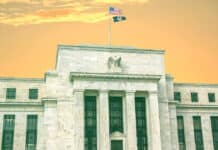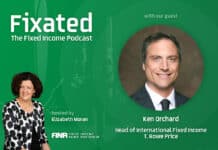
During recent client meetings, my outlook for higher U.S. Treasury yields in the longer term has often been high on the agenda. Clients have also been keen to hear my views on the U.S. dollar since the two markets are interrelated.
Unlike my view on U.S. Treasuries—which is about as high a conviction as I have had in several years because almost all factors align—my outlook on the U.S. dollar is more nuanced.
Like Treasuries, time horizon is important for the dollar. In the short term, heading into the summer, we can expect the greenback to rebound after its steep sell-off in April. But currency trends typically unfold over much longer time frames. In the longer term, watch for a weaker U.S. dollar in the next few years, providing opportunities to add alpha through currency positioning.
At the intersection of multiple forces
Unlike high-quality government bonds, the U.S. dollar is not an asset class. It’s a currency that lies at the intersection of multiple powerful forces that tie together global financial, commodity, and trade markets. These interact to form complex dynamics that differ from the typical drivers of an asset class.
We can see some of these at play today, shaping the longer-term direction of the currency. Despite the U.S. dollar’s bounce in May, I believe in the narrative that U.S. exceptionalism is probably past its peak.
I would actually argue that the beginning of the end came when western countries used financial sanctions on Russia and restricted access to the U.S. dollar-based international payments system in response to Russia’s move into Ukraine. If you create limitations and questions around the reserve currency, the world will look for alternatives.
Factors working against the U.S. dollar:
- Lagging U.S. economy Germany’s landmark fiscal expansion looks set to boost the eurozone economy, and China is slowly increasing its monetary and fiscal stimulus to help battle the negative effects of U.S. tariffs. The U.S. economy looks likely to lag these markets, reducing demand for dollars. The U.S. productivity boom—underpinned by the massive increase in shale oil and gas production as well as leading edge in artificial intelligence—arguably has flattened out (for now!).
Also read: Fixed Income Flows Lead ETF Charge
- Deteriorating quality of U.S. institutions The quality of a country’s or region’s institutions, measured by factors like the strength of the rule of law, the level of central bank independence, and the integrity of the crucial innovation engine of a country’s educational establishments, is another driver of currency demand. The currency of a country with well-defined and enforced laws along with a central bank that is insulated from political demands would tend to draw inflows. After all, would you want to hold a currency that a central bank under pressure to cut rates would devalue by stoking inflation?
While I don’t think that this type of outcome is currently likely in the U.S., investors will be closely monitoring Federal Reserve independence and perceptions of political influence.
- Diminishing attractiveness for global intellectual capital A country’s ability to attract entrepreneurial leading-edge thinkers is another long-term factor in currency demand. U.S. businesses at the forefront of technological change— like the “Magnificent Seven” stocks that drove the U.S. equity market higher for years—draw foreign investment and demand for U.S. dollars. The Trump administration’s policies could reduce the attractiveness of the U.S. as a destination for immigrants who are global thought leaders.
The flip side of the coin: Supportive U.S. dollar drivers
A range of factors continue to support the U.S. dollar. Interest rate differentials can drive exchange rates. With all else equal, more funds will flow into a country with higher interest rates than one with lower rates, boosting the higher-yielding currency.
Factors working in favour of the U.S. dollar:
- U.S. yield advantage Looking at nominal U.S. yields versus other global high-quality government bond rates, the U.S. has an advantage. In early June, the 10-year U.S. Treasury note yielded about 4.44%, far more than the 2.53% offered by Germany’s 10-year government bond.1 Adjusting for inflation lowers the available yield—the U.S. 10-year Treasury inflation protected securities (TIPS) yielded only 2.09% in early June—but that was still meaningfully higher than the real German yield. With the U.S. experiencing more inflationary pressure than Europe, the Fed is less likely to cut rates, providing more interest rate differential support.
- Ongoing front-loading of U.S. imports from China I expect front-loading of U.S. demand for Chinese imports to continue after the two countries in early May announced a 90-day pause in higher tariffs. This would extend—and likely temporarily strengthen—the flow of U.S. dollars into China, which the country would then need to recycle back into U.S. assets.
Longer-term dollar negatives to take precedence
How will the dynamics of the negative and positive drivers play out? I expect the positive factors will start to dissipate over the next few months. In the second half of 2025, the longer-term negatives weighing on the U.S. dollar will likely take precedence, initiating a structurally negative trend for the greenback that could last for years.
As the U.S. dollar’s downturn during the April sell-off in risk assets demonstrated, investors are no longer viewing the dollar as a safe haven during widespread market turbulence. This is a symptom of the longer-term negative factors for the greenback. The recent positive correlation between the U.S. dollar and risk assets is a vital consideration for portfolio construction and diversification.





























